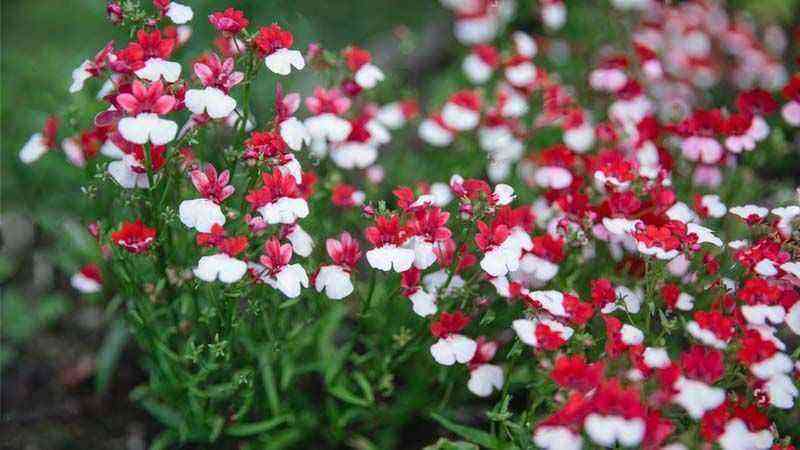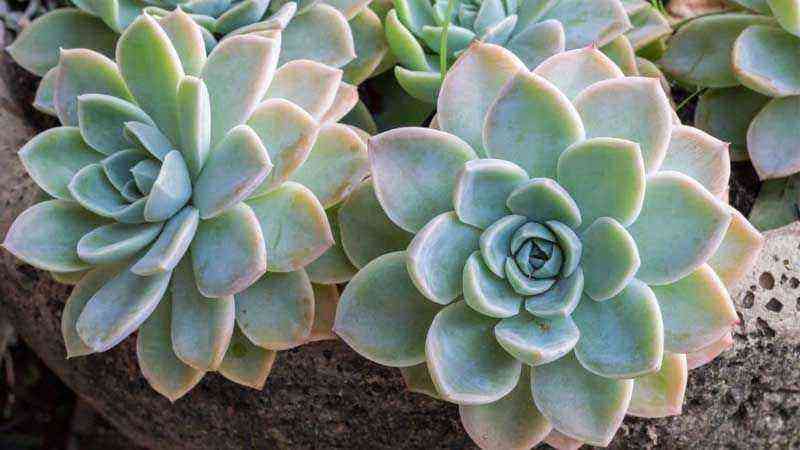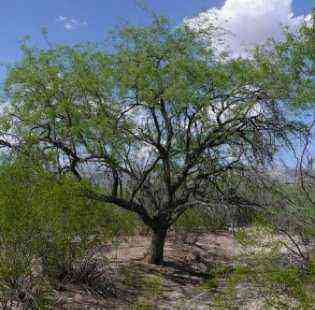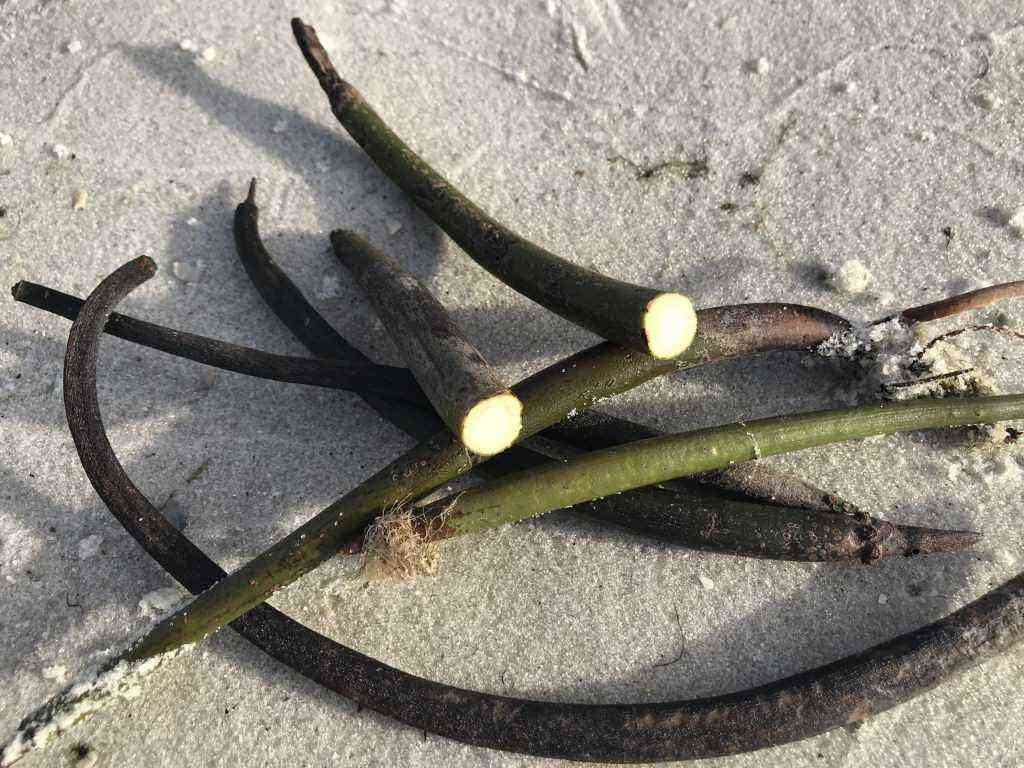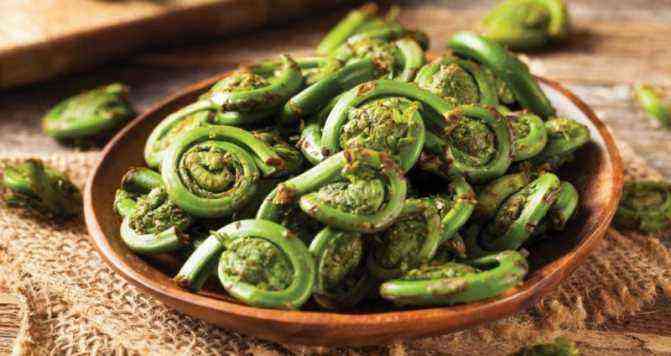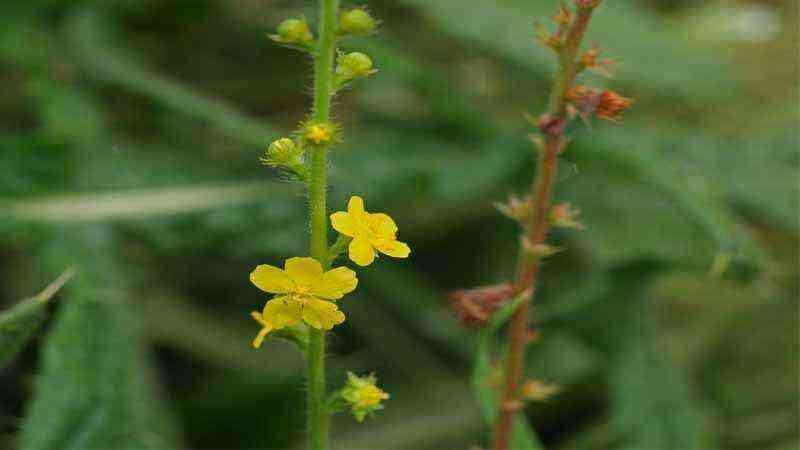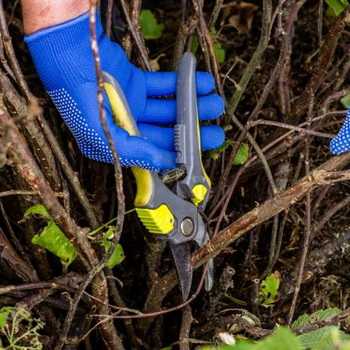 The pruning and shaping of fruit and berry bushes differs from the same operations carried out with fruit trees. The fact is that these plants do not have a pronounced main trunk, so you have to pay attention to each individual branch. This work may seem simple, since it is carried out “on the ground” and there is no need to climb to a height. In fact, there are many nuances in this matter, so preliminary preparation is indispensable.
The pruning and shaping of fruit and berry bushes differs from the same operations carried out with fruit trees. The fact is that these plants do not have a pronounced main trunk, so you have to pay attention to each individual branch. This work may seem simple, since it is carried out “on the ground” and there is no need to climb to a height. In fact, there are many nuances in this matter, so preliminary preparation is indispensable.
How to cut and shape the crowns of bushes of black, red and white currants, as well as gooseberries and raspberries, is described in detail in this article.
Black currant
The black currant bush consists of 12-15, and sometimes even 20-25 branches of different ages of the zero order. In the first year, the zero shoot, that is, the shoot from the root, grows very strongly. Then the growth rate decreases sharply. By the fifth or sixth year, the growth of branches in length is about 5 cm. If you examine the branch from the base to the top, you will notice that its lower part is a branching zone. From the well-developed vegetative buds located here, the strongest lateral branches grow. Above is the zone of fruiting and growth. The branching here is weak, the branches are short, for the most part they are fruits. But flower buds are strong, well developed. The overwhelming part of the crop is located in this part of the branch. On the upper part, almost all lateral buds are floral, but they are much weaker than in the middle part. Therefore, here the brushes are short and the berries are smaller. The apical bud is always vegetative (it is necessary to increase the length of the branch).
With the weakening of the growth of shoots from the apical buds, tops appear at the base of the branches. They look very strong, but they bear fruit worse than the main branches, and their productive period is shorter.
The most valuable branches of the first and second order of branching for fruiting. And if their length is at least 40 cm, then the lateral flower buds and fruits are strong. They are capable of producing full-fledged clusters of large berries. Unfortunately, the age of the fruit is short-lived — two or three fruiting and was exhausted. Rarely where you can find a baby older than 4 years. Based on this, it is not difficult to calculate that in black currant, high productivity can be expected from branches not older than 5 years. The entire system of forming and pruning black currants is based on these features of growth and fruiting.
Shrub formation
Cut off any branches protruding from the ground shortly after planting. For the weak, leave one at a time, for the strong – 3 kidneys. Next year, if very weak branches have grown from the buds left, you will have to cut them shortly again. So what to do? They won’t be of any use anyway. It was necessary not to use “mouse tails”, but to use good seedlings, then there would be no such worries. If the seedlings were well-branched, with a strong root system, and you did not dry out or damage them during transportation, if they were planted on time and in compliance with the planting technique, there will be many strong branches. Choose from them 2-4 the most conveniently located. Cut the rest at the base. When forming a currant bush, do not squeeze or be greedy. Leave a lot of branches – you will get a lot of problems in the future, but you still won’t get a good bush faster. The first branches are the base of the bush. However, they did not just leave as many branches as they should and away from the bush. This can only be done if the branching of the plants of this variety is good. If it is weak, then cut the left branches in half, if the middle – by one quarter.
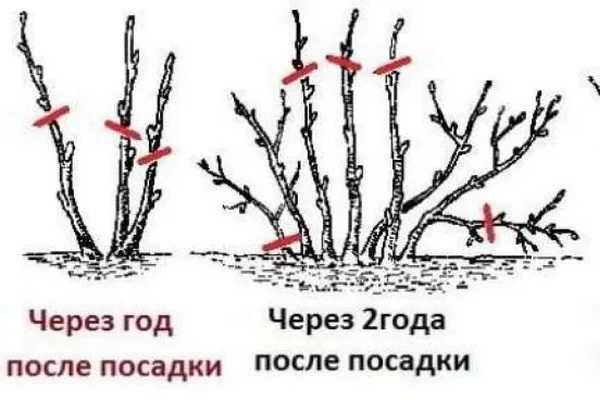
In the future, in each bush, annually leave with a rare planting 2-3, with a dense one – 1-2 branches coming from the root. Make sure that the base (base) of the bush does not grow too much. The formation will be completed in 5 years. Since the bush was replenished with new branches gradually, some will grow, others will begin to produce the first berries, the harvest will increase in the third, it will reach a maximum in the fourth, and the oldest will begin to sharply reduce their productivity. A new stage begins – the annual pruning of the bushes.
Trimming
If the shrub is well formed, pruning it annually is very easy. Cut out all branches over the age of five. Their productivity is low, and they take up a lot of space in the bush. It is useless to wait for normal growth and fruiting from the branches in which the glass pot has settled. Remove all of them or trim to a healthy part. Dry, broken, strongly affected by a bud mite branches, as with any sanitary cleaning of the crown, are also subject to cutting. Excess zero shoots, first of all weak, thin, puny, cut to the level of the soil. If, unfortunately, the tops of the branches are damaged by powdery mildew, cut them off. This is, perhaps, the whole pruning. It remains only in accordance with the branching ability to shorten the zero branches left in the bush and strong branches of the first branching order. Rarely will you need to shorten second-order branches. Unless only if their length turns out to be more than 40-50 cm.
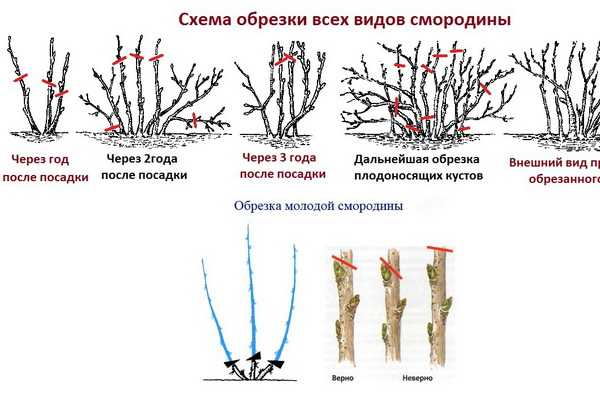
And how to properly cut a neglected fruit and berry bushes? You will have to tinker with it a little longer until you bring it to a normal state. Of course, you cannot restore the ratio of branches of different ages in such a bush at one time. You will probably find an abundance of four-five-year-old branches, but with younger ones there will be a problem in the first year. Start with a sanitary cleaning of the bush. Away all the sick, dry, very old, frail, lying on the ground. Is it still thick? Remove some of the healthy branches. It is important to clear a foothold for the emergence of new, strong zero shoots, and as soon as they appear, replenishment of the bush will go. After a year or two, in a maximum of three years everything will be normal.
Could be so: cut off all or almost all branches and start forming a new bush practically from scratch. The roots are powerful, recovery will be quick.
Red and white currants
The pruning of red and white currant bushes is generally similar to that applied to black. But there are also some differences associated with the characteristics of growth and fruiting. Examine a large, strong branch of red (or white) currant during fruiting. There is a shoot at the top of the branch. Fruiting, of course, is not here. Look forward to next year. Below the brushes are single or in groups of 2-3. They were formed from lateral buds on the one-year-old part of the branch. And below, where the one-year-old part of the branch merges with the two-year-old or the two-year-old with the three-year old, a whole necklace of tassels.
Yes, all brushes are long, full. How many are there? 20-30? Maybe more. Do not be surprised. Here, on the former tops of the branches, the most prolific place, the strongest flower buds. Remember this and do not shorten the branches when pruning. Otherwise, you will cut off the future necklace without letting it bloom, and you will not get many, many berries.
On the perennial parts of the branches, the clusters of berries are placed on the pods. 5-8 or even more hands hang from each fruit like goatees. In colored currants, the fruits are tenacious, they can bear fruit regularly up to 8 years. And therefore, the service life of the branches of red currants is not 4-5 years, but twice as long – 8-10. Therefore, there is no particular need to make sure that all the ages of the branches are represented in the bush. There are strong fruit-bearing ones, there are young ones to replace those who will soon leave, that’s fine. And leave as many zero branches as necessary for upcoming replacements. And then you will dilute the density, then you will thin out. These are all the main features of pruning red and white currants, directly arising from the characteristics of their growth and fruiting. It remains to add that it is necessary to rejuvenate the branches as soon as the length of the shoots becomes less than 10 cm. Moreover, you can rejuvenate the branches by pruning to transfer to a strong top or a strong lateral branch that has not lost the ability to grow. This is quite possible with red currants. The fruiting capacity of its top branches is not lower than that of zero branches.
gooseberries
Formation
To form a gooseberry bush, immediately after planting, cut the weak branches into two, and the strong ones into three buds. Next year, if short, thin branches grow from these buds, you will have to repeat the short pruning.
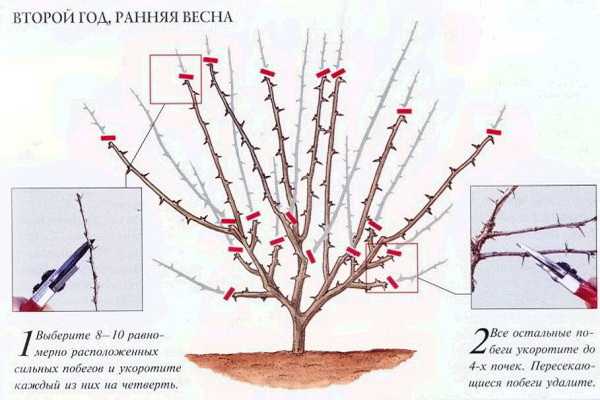
If the branches turn out to be strong, choose 3-5 of them that are most well-located, and cut the rest near the soil itself. If you find that the tops of the left branches have not matured or, God forbid, are damaged by powdery mildew, cut them off to healthy tissues. A year will pass, and in the same way, replenish the bush with three to five new branches. That’s all the shaping. Needed for a normal bush 8-10 branches in their places. Next comes the routine work of maintaining order in the crown. And order in this case is good growth of branches and good lighting. Gooseberry does not tolerate shading. Growth stops immediately, the branches age prematurely, the productivity and quality of the berries are sharply reduced.
Trimming
The main harvest of gooseberries is borne by fruits aged from two to four to five years and branches of the first or third order of branching. Older fruits and branches of higher orders of branching are unproductive. Based on this, it is easy to calculate that 5-7-year-old branches are of the greatest value in gooseberries. Older branches, i.e. 8-year-old branches, are usually recommended to be cut. However, the gooseberry, like the ladies, has not only sharp thorns (claws), but also the age is determined not by the calendar, but by the state. 10-year-old branches and 6-7-year-old ringlets can feel great and bear fruit well. So is it necessary to focus on their age when pruning branches? Apparently, it is more correct to be guided by their condition.
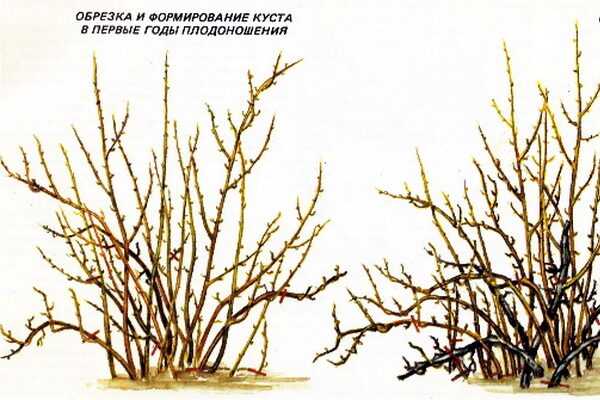
When pruning adult gooseberry fruit bushes, especially when they are started a little, start with sanitary cleaning. Sick, broken, dry, frail, regardless of age and location, as well as branches that have stopped growing and fruiting, remove immediately. If they are on the ground and grow too close to it, if you will not use it for breeding, also cut to the ground. Or cut it to a strong branch if there is room and space for it in the crown of the bush. Cut off unripe, frozen, dried, disease-damaged tops of the branches. After that, if thickening is still felt in the bush, start thinning. Work until your hand has free access to any part of the bush. Remember that gooseberries cannot tolerate shading. You can rejuvenate the branches, when the need arises, in the same way as in red currants.
Raspberry
Features of growth and fruiting. Raspberries are a perennial shrub, but each stem only has a lifespan of two years. In the first year the stem grows, in the second it branches and bears fruit. After fruiting, it dries up. But there are raspberries among the plants and remontant varieties. They have a slightly different nature of growth and fruiting, respectively, and their own pruning features, about which a little later.
The bush is renewed annually at the expense of root suckers. The ability to give offspring is a varietal sign. In plants of some varieties, a lot of them are formed, up to 60 per bush. These are such varieties as Latham, Marlborough, Newburgh, Visluha. Others – Novost Kuzmina, Scarlet Sail, Barnaulskaya, Meteor – have an average number of offspring, up to 30 per bush. And some – Kaliningrad, the award – no more than 15.
If we look at which buds are located along the length of the stem and what is obtained from them, then the picture on average looks like this: the lowest buds are growth buds, they are capable of producing replacement shoots; further on a quarter of the length of the stem, potentially flower buds are located, but they are poorly developed and usually do not awaken to growth; above – almost half of the stem – there are strong, well-developed buds, from which shoots grow, bearing the bulk of the crop; the top of the stem usually ripens poorly, which is why the shoots on it are weak and the berries are of low quality.
Shaping and pruning
You can grow raspberries in separate bushes, or you can grow them with a solid ribbon. As it is more convenient, as it is more profitable, to which the soul lies more, do so.
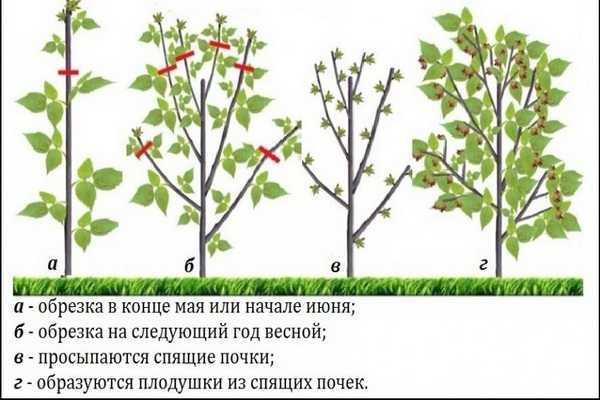
Before planting or immediately after it, cut the stem to a height of about 40 cm. If you prefer a bush, then remember that there should not be more than 10, at least 12 stems in it. This does not mean, however, that you can leave any stems that have grown. Not! Only strong, healthy and close to the base of the bush. When forming bushes, raspberries are weak, short, underdeveloped, thin, remove the sick without hesitation and regret. The benefit of them is not great, but to leave the account is to deceive yourself. In the first two or three years, it will be difficult to create a bush, and then just adjust the number of branches. It will be tempting to leave more branches – do not give in. In shading, the buds are poorly laid, branching is worse and fruiting is poorer. When pruning raspberry bushes, remove old, fruiting branches annually and leave the same number of young strong ones to replace them. Cut the rest. The shoots between the bushes, and it may appear a few meters from the mother plant, dig up and use. Or don’t let it grow at all. Appeared – cut, pull out. In spring, trim off the unripe tops of the branches. The harvest on them is weak both in quantity and quality of berries. And if they are frozen, all the more they should be removed. At least trim to healthy tissue.
To increase the productivity of raspberries in the summer, when the annual stems are about 1,5 m long, you can pinch them. If you like it – take it into service.
Growing raspberries in solid, narrow (50-60 cm) and long ribbons is easier than single bushes. No need to fool your head while maintaining the base of the bush and the number of stems in it. And do everything else the same way: remove two-year-old branches, weak, sick, etc. Leave strong, sturdy so that the distance between adjacent stems is about 10 cm. This means that there will be 25-30 stems per linear meter.
Raspberry stems are thin, long, well leafy. A stronger breeze blows – they can lie down. At least they will deviate greatly from the vertical. And the harvest, if high, bends to the ground. Therefore, for raspberries, you definitely need a trellis. This does not mean that you have to create some kind of powerful structure. The trellis can consist of one wire, to which the stems are tied. It can be with two wires, between which the stems are placed. You can, of course, use twine instead of wire. Usually it is enough for a year. And next year you will put on a new one. A trellis can be created without any supports – tie the stems with twine together and let them support themselves.
The frost resistance of raspberries is not that high to withstand any frost. In Siberia, in the north-east of Russia, in the Urals, raspberry stalks are usually bent to the ground for the winter, covered, and the entire wintering under the snow passes. All these works are directly related to pruning, and therefore are mentioned here.
Features of pruning remontant varieties of raspberries
In plants of remontant varieties of raspberries, the growth, branching and fruiting of each full-fledged stem fits in one year. Hence, the features of pruning follow. After fruiting, cut off the aerial part of all plants completely. New stems will grow in the spring. There will be many weak ones among them. Therefore, be sure to thin them once or twice, or even three times, so that the remaining ones are free, and so that they are strong enough. After fruiting, cut back whatever has grown this season. Thus, a remontant raspberry will have a one-year growth and fruiting cycle, rather than a two-year one, as with a regular one. There are a lot of advantages in this. Pests and diseases do not accumulate. The plantation is healed every year. In winter, the stems do not freeze and do not freeze – they simply do not exist. Maintenance is easier, more comfortable to work. Only one thing is alarming. Summer is just a little lacking for the fruiting potential to be fully realized. As soon as you have time to pick the first berries, and here already the cold has come. There are many ovaries, and the berries ripen poorly. Little heat, little sun.
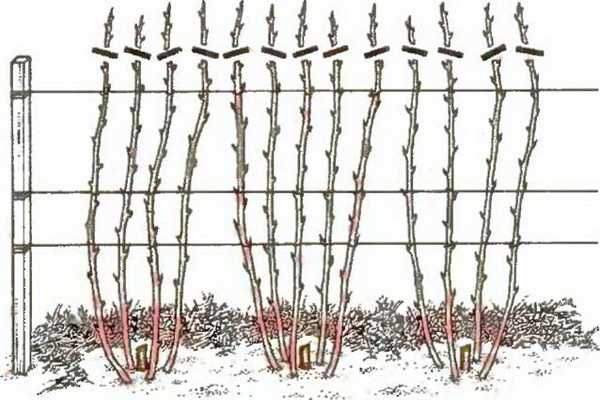
You can prune the remontant raspberry plants in the same way as for regular raspberries. The annual stem, although it has already borne fruit, will not dry out. It overwinters and will branch and bear fruit again. So let it bear fruit, and in the meantime, new stems will grow and begin to bear fruit. By autumn, they will give an additional harvest. It turns out, as it were, two harvests, although in total they are usually not higher than the harvests of conventional varieties. But the period of consumption of fresh berries will be significantly lengthened. With this method of pruning, two-year-old stems must be cut out, and the normalization of the newly growing and abandoned stems must be done very carefully.

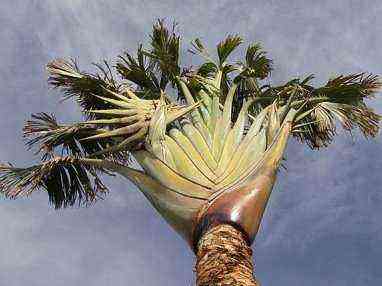


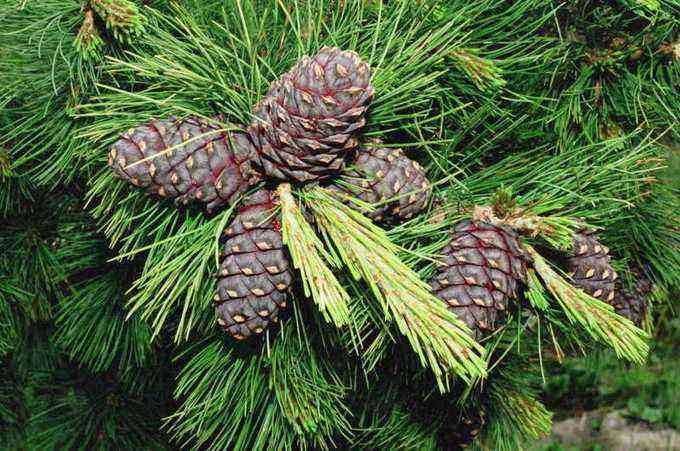
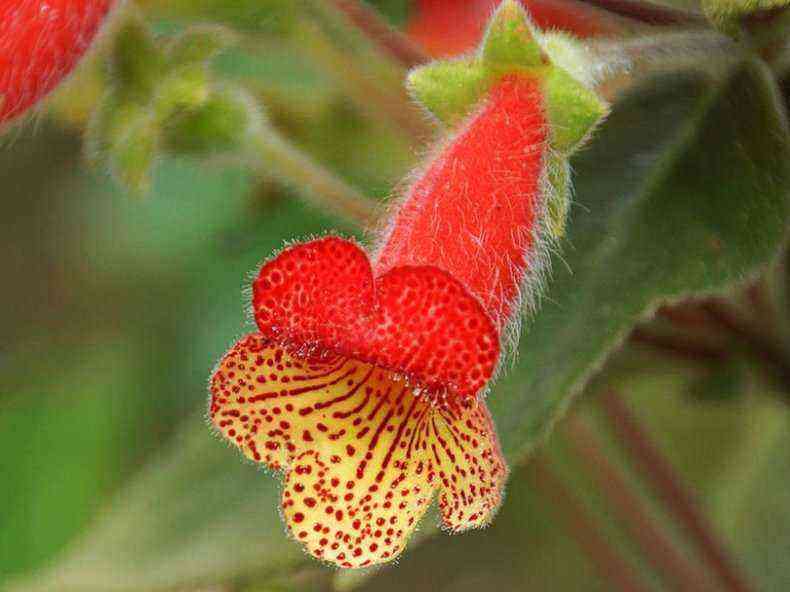
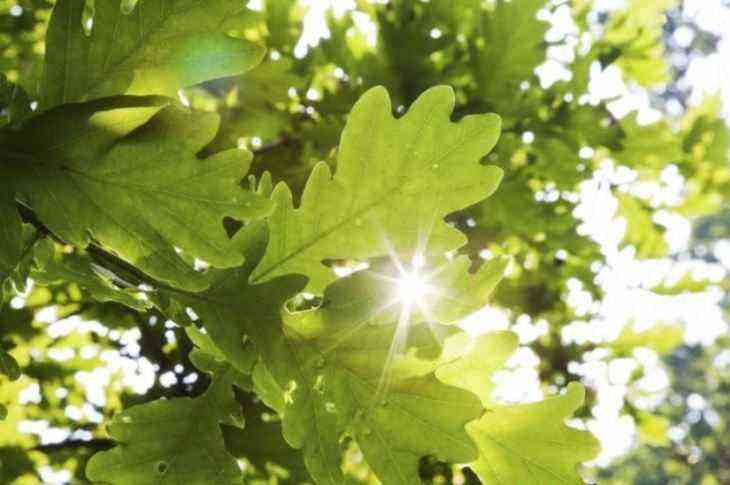
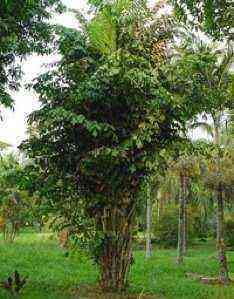
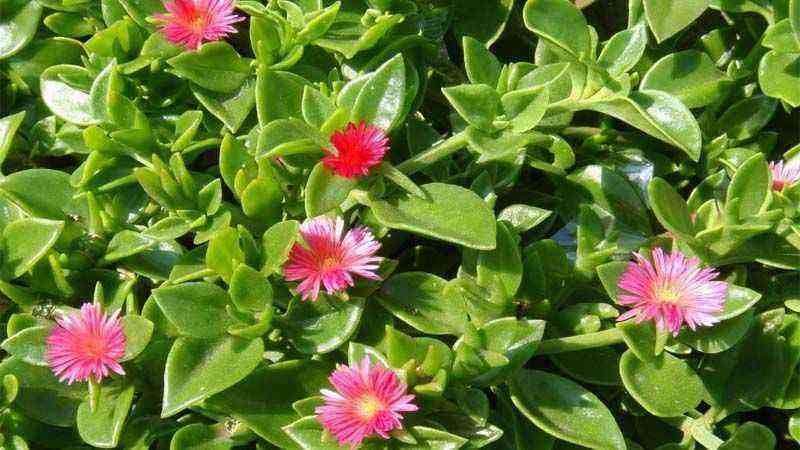
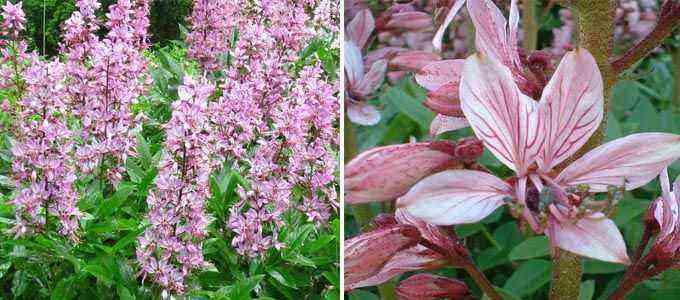
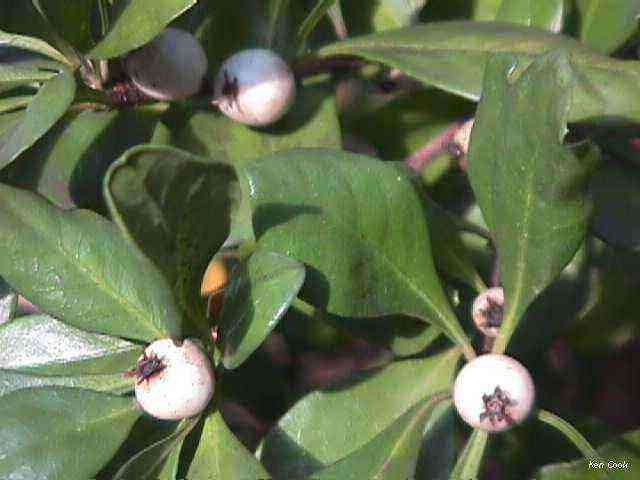
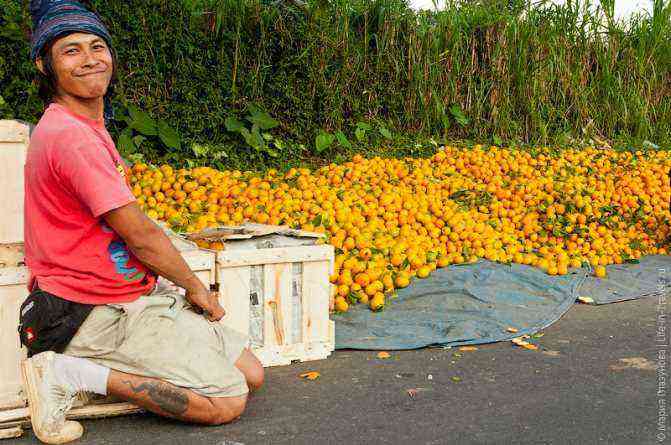
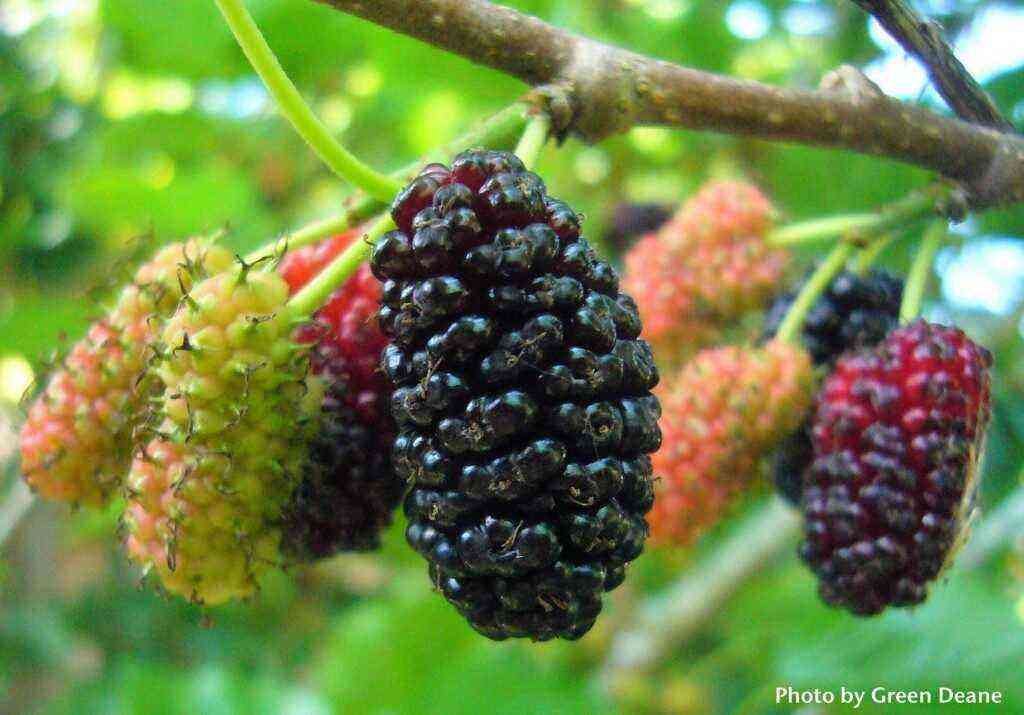


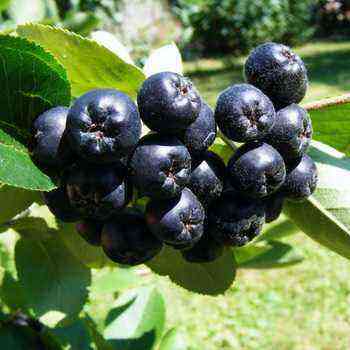
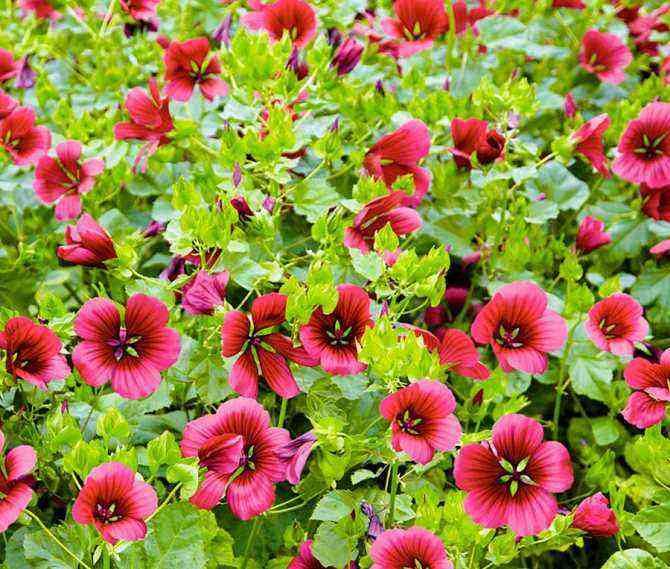
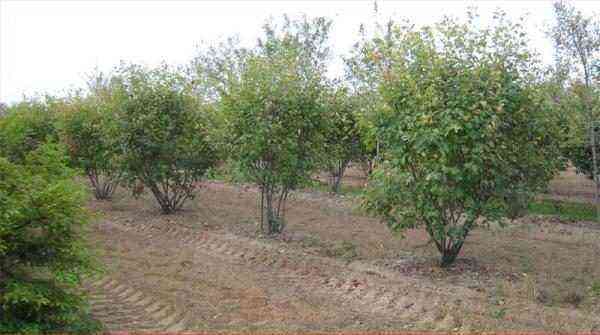
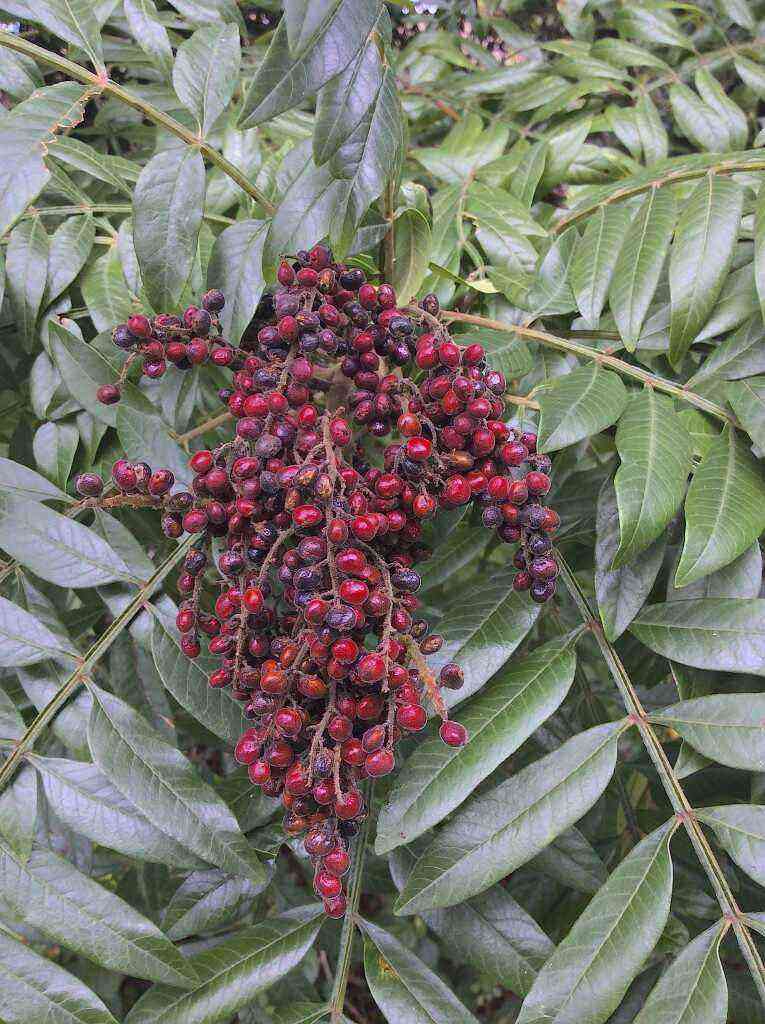


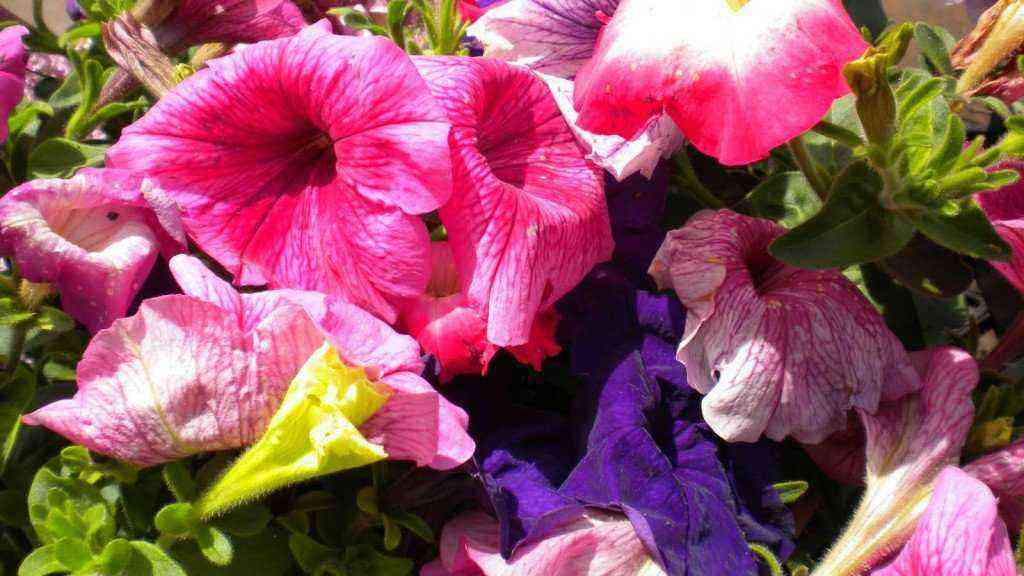
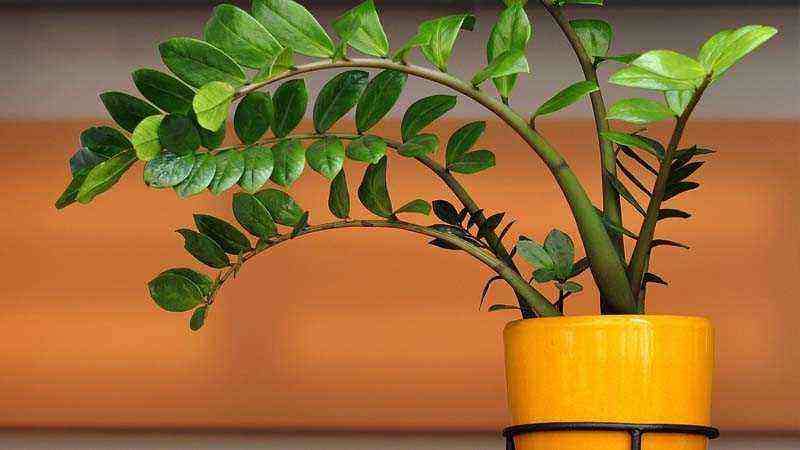
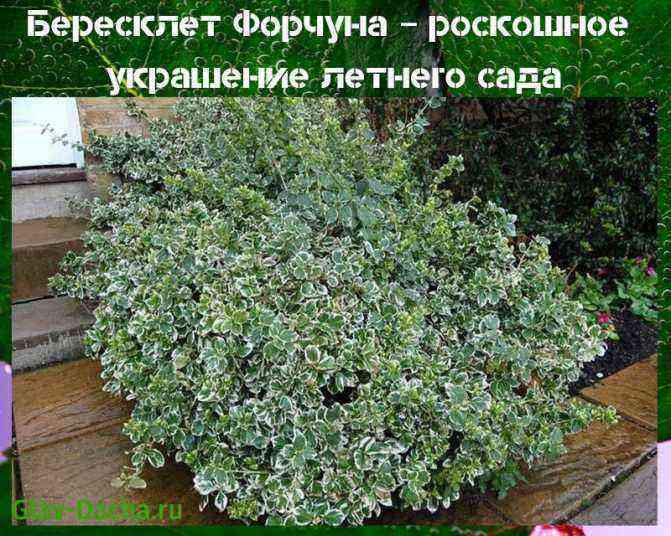


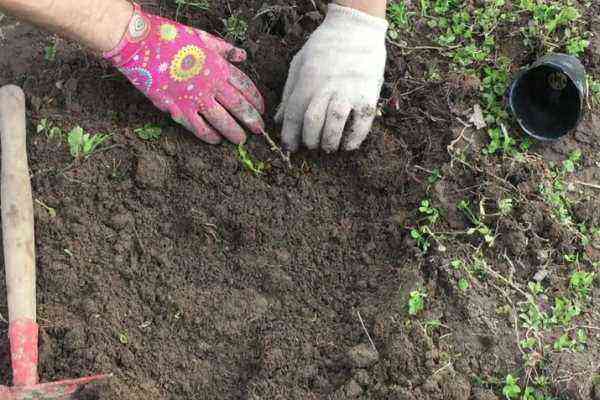
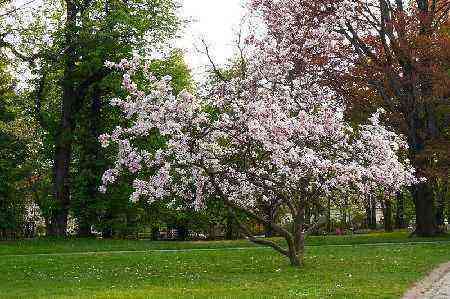
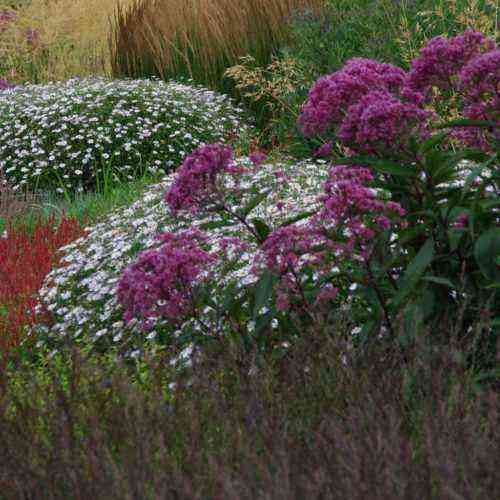

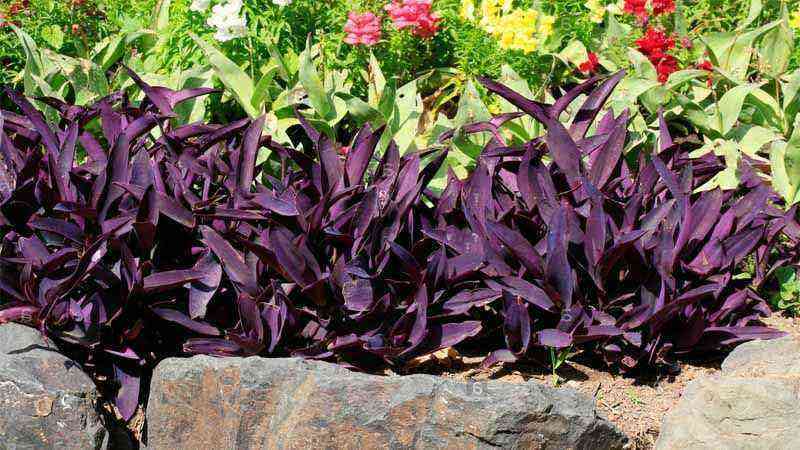

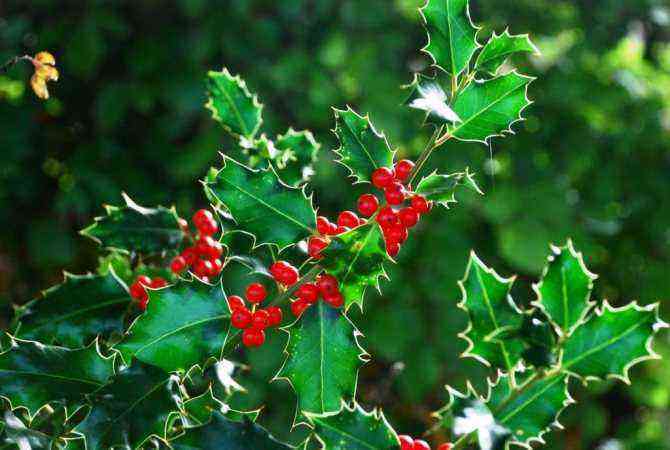
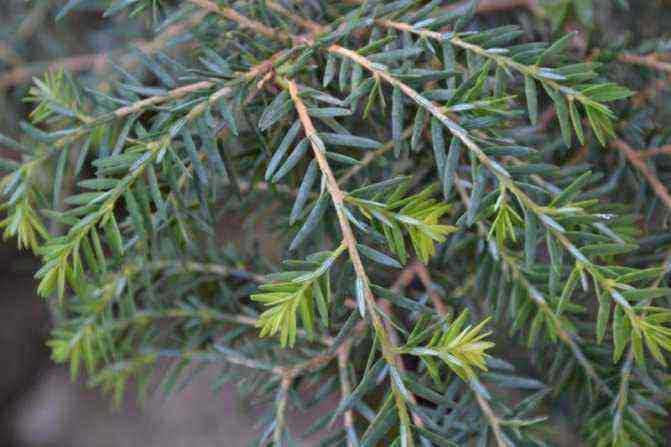
![Cultivation of Manihot esculenta [Cassava, Cassava] Cultivation of Manihot esculenta [Cassava, Cassava]](https://farmer-online.com/wp-content/uploads/2021/05/Cultivation-of-Manihot-esculenta-Cassava-Cassava.jpg)
